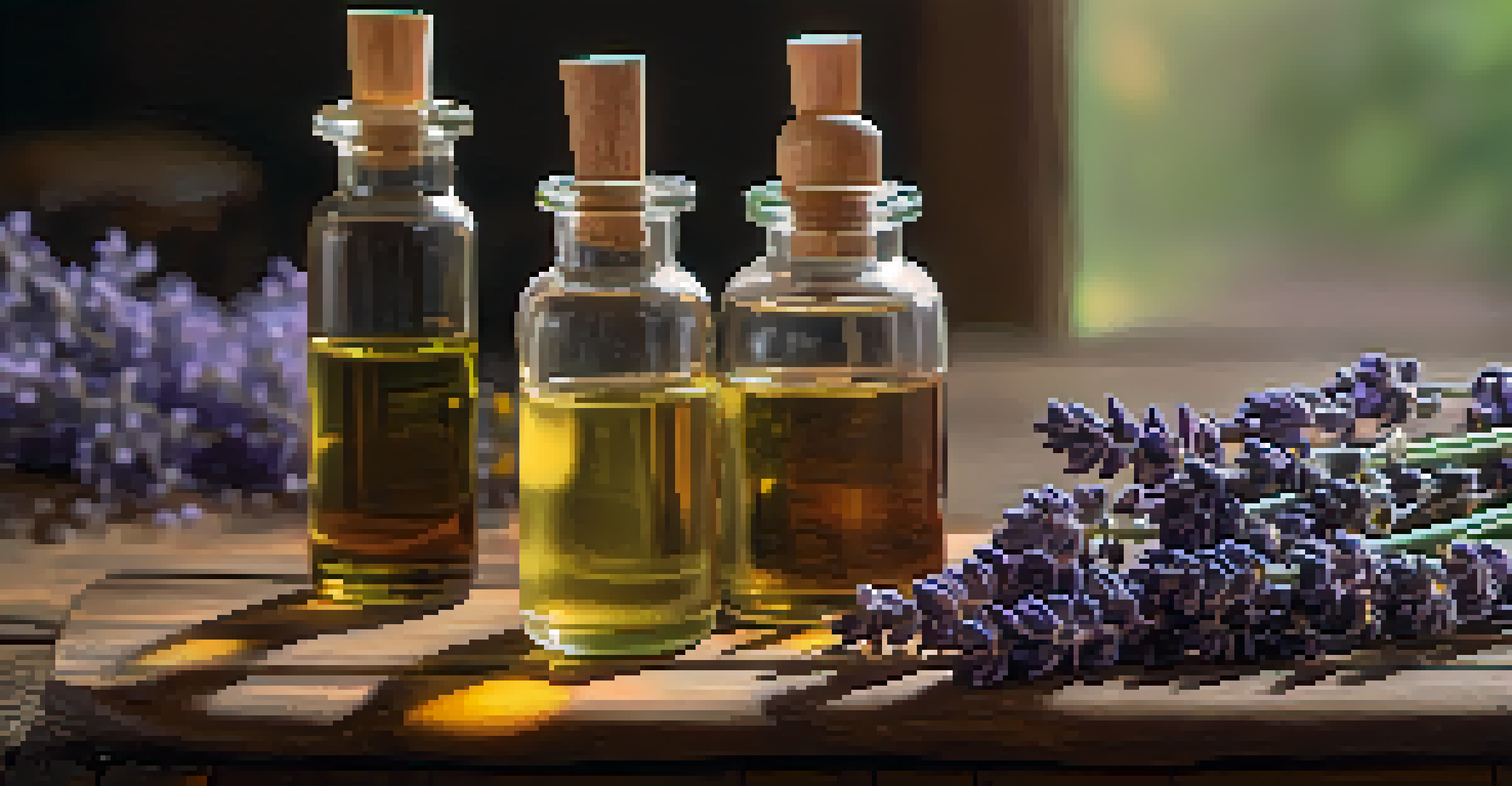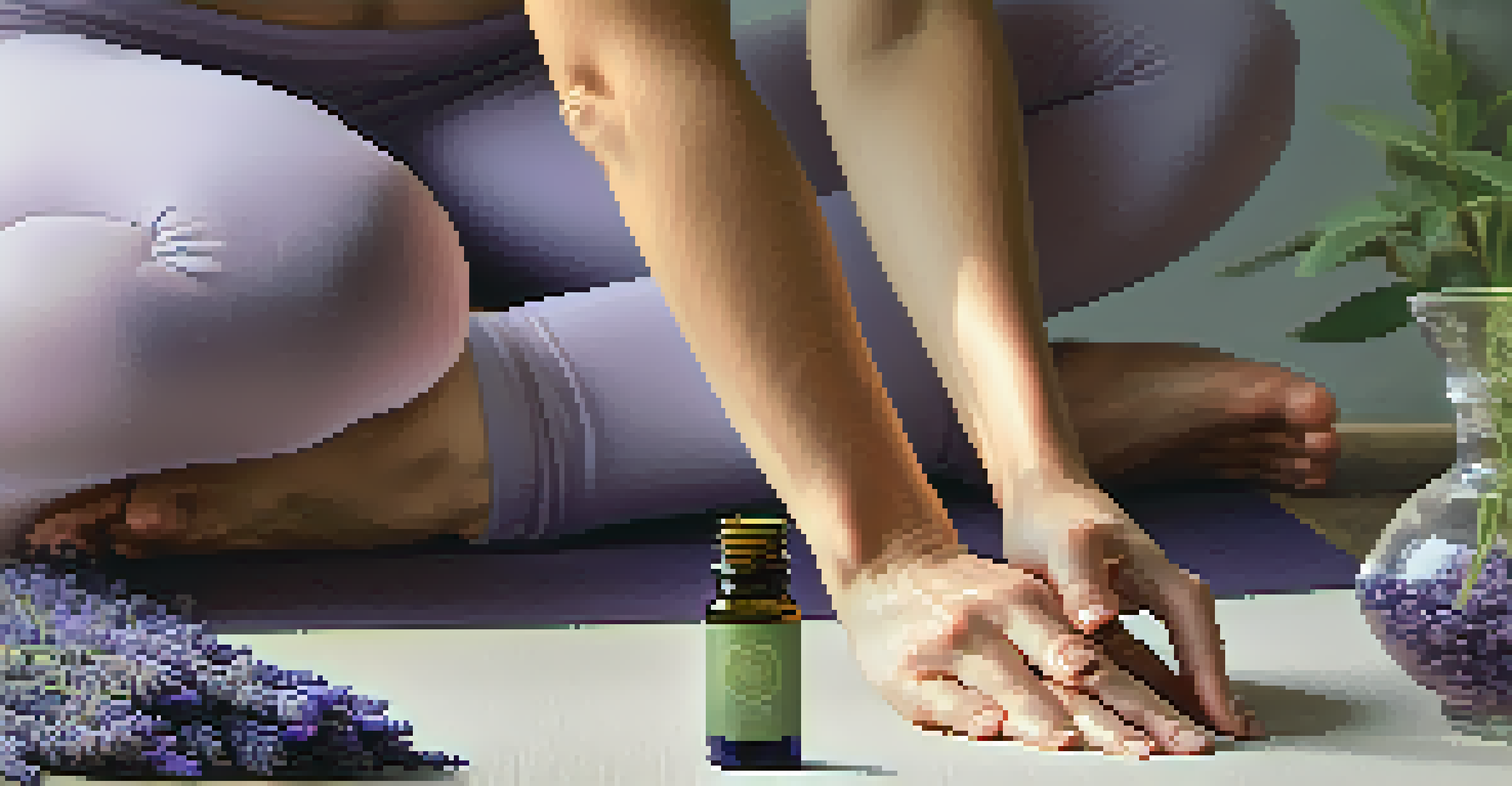Essential Oils for Restorative Yoga: A Guide for Practitioners

Understanding Restorative Yoga and Its Benefits
Restorative yoga is all about relaxation and rejuvenation. It focuses on gentle poses, often supported by props, allowing your body to release tension and stress. Practitioners often find that this style of yoga cultivates a deep sense of inner peace.
Yoga is the journey of the self, through the self, to the self.
The essence of restorative yoga lies in its ability to slow down the mind and body, helping to restore balance. This practice is particularly beneficial for those dealing with anxiety, fatigue, or emotional upheaval. By creating a space for stillness, you can connect more deeply with your breath and body.
Incorporating essential oils into your restorative yoga routine can amplify these benefits. Scents can evoke powerful emotions and memories, helping to deepen your relaxation and enhance your overall experience.
Choosing the Right Essential Oils for Your Practice
When it comes to essential oils, choosing the right one can make all the difference. Some popular options for restorative yoga include lavender, chamomile, and sandalwood, each offering unique calming properties. Consider your personal preferences and how different scents make you feel.

Lavender is well-known for its soothing effects, often used to promote relaxation and ease tension. Chamomile, on the other hand, is cherished for its ability to relieve anxiety and encourage sleep. Sandalwood adds a grounding element, helping to center your thoughts during practice.
Restorative Yoga Promotes Relaxation
Restorative yoga focuses on gentle poses and the use of props to help release tension and cultivate inner peace.
Experimenting with different oils can help you discover what resonates most with you. Keep in mind that the quality of the oil matters too; always opt for pure, high-quality essential oils to ensure the best results.
How to Use Essential Oils in Your Practice
There are several ways to incorporate essential oils into your restorative yoga practice. One popular method is to diffuse the oils in your yoga space before you begin. This creates a calming atmosphere and allows the scent to envelop you as you settle into your poses.
The mind is everything. What you think you become.
Alternatively, you can apply essential oils topically. A simple blend of carrier oil and your chosen essential oil can be massaged into pulse points, such as wrists or neck. This method provides a personal connection to the scent throughout your practice.
Another option is to place a few drops of oil on your yoga mat or on a cloth nearby. As you breathe deeply during your practice, the aroma will gradually fill the space, enhancing your experience without overwhelming your senses.
Creating a Calming Atmosphere with Essential Oils
The environment in which you practice restorative yoga plays a crucial role in your experience. Essential oils can help to create a serene atmosphere that invites relaxation. Consider combining soft lighting and soothing music with the right scents to create your ideal space.
For example, using a diffuser with a blend of lavender and frankincense can promote a tranquil ambiance. The gentle aroma encourages deep breathing, allowing you to let go of distractions. You might also consider adding elements like candles or plants to enhance the sensory experience.
Essential Oils Enhance Experience
Incorporating essential oils like lavender and chamomile can amplify relaxation and create a calming atmosphere during practice.
Remember, your yoga space should feel like a sanctuary. By thoughtfully incorporating essential oils, you can elevate your practice and make it a truly restorative experience.
Popular Essential Oil Blends for Restorative Yoga
Creating your own essential oil blends can be a fun and personal way to enhance your yoga practice. For instance, a blend of lavender, bergamot, and ylang-ylang can create a soothing scent that helps to alleviate stress. Experimenting with different combinations allows you to find what works best for you.
Another popular blend is the 'Calm Blend,' which includes chamomile, sandalwood, and clary sage. This combination fosters relaxation and balance, making it perfect for restorative yoga sessions. Essential oils can be quite potent, so start with a few drops and adjust based on your preference.
You can also explore pre-made blends available in stores. Many brands offer blends specifically designed for yoga and meditation, ensuring you find something that resonates with your practice.
Precautions and Tips for Using Essential Oils
While essential oils can be a wonderful addition to your restorative yoga practice, it's important to use them safely. Some oils can cause skin irritation or allergic reactions, so always perform a patch test before applying them topically. If you have sensitive skin, consider diluting the oils with a carrier oil.
Additionally, certain essential oils may not be suitable for everyone. Pregnant individuals or those with specific health conditions should consult a healthcare professional before using essential oils. Staying informed ensures that your practice remains safe and enjoyable.
Mindfulness Deepens with Aromas
Using essential oils during restorative yoga enhances mindfulness, allowing practitioners to connect more deeply with their breath and body.
Lastly, remember that less is often more when it comes to essential oils. A few drops can go a long way, and overwhelming scents can detract from the peaceful atmosphere you’re trying to create.
Enhancing Mindfulness with Essential Oils During Practice
Mindfulness is a key aspect of restorative yoga, and essential oils can help deepen this state of awareness. As you inhale the aromas, take a moment to focus on how they make you feel, allowing yourself to fully immerse in the experience. This practice can enhance your connection to the present moment.
For example, as you settle into a restorative pose, take a few deep breaths and visualize the calming effects of your chosen essential oil washing over you. This mental imagery can help you release tension and cultivate a sense of peace.

Incorporating essential oils into your mindfulness practice not only enriches your restorative yoga experience but also serves as a reminder to be present with your body and breath, allowing you to leave behind the chaos of daily life.